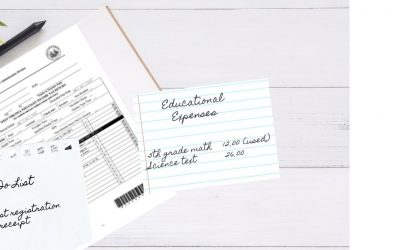Parents who have homeschooled more than one of their own children will face this initially-shocking truth: our children are all different! “How can that be?” you ask. They have the same parents and are being raised in the same home. Fascinating, isn’t it?
They learn differently, too. Since we want each child to reach his full potential, what’s a mom to do?
The simplest place to start is with learning styles. “Learning styles” is merely a label educators put on the way people learn and remember best. As we understand our children’s learning styles, we can better avoid educational frustrations and pick curriculum and school activities more wisely. Besides, understanding our children helps us get along better.
The four main learning styes are VARK – Visual, Auditory, Read/Write, Kinesthetic
Visual
Some students remember best what they see. They need to look at the colorful page, diagram, or picture. Talk if you want, but they will want something to engage them visually to help them retain what you’re saying. Let them color the parts of the flowers and watch demonstrations. These are the children who often describe things by what they look like: “Oh, I think that’s in the green book with the yellow sun on the cover!”
Auditory
Others learn by hearing. They absorb the words they hear and remember what they’ve been told. These are the children who need you to explain things to them – out loud. Chances are you know them as your talkers. They process through hearing – and talking. Auditory learners thrive with a variety of auditory resources, like documentaries, videos, and lots of discussion.
Read/Write
Some children are blessed to have a natural affinity for the written word. They remember what they read and enjoy workbooks and seatwork. They like to create a written, visual record of what they see, hear, or experience. Once they are developmentally ready for the fine motor skills of writing and have cultivated the ability to know what to write, they will write for you fairly painlessly. Note taking and lists might be very helpful for this student.
Kinesthetic
The kids who learning by doing are often the ones who are fidgety and active. Don’t assume they are trying to avoid learning. They may actually love to learn – which is why they want to build the tower, explore the woods, and take apart the chain. They figure things out as they do them. Surely we wouldn’t have technicians, mechanics, or surgeons without them, but they are the ones least likely to be “successful” in traditional school since it requires sitting still for long periods of time and doing nothing but listening and perhaps a bit of reading and writing.
The Take Away
While your children may not fit neatly into just one category, the VARK tool can help you take advantage of your child’s strengths to maximize learning. For example, once you know why your visual learner tends to doodle artwork on his/her paper, you may allow that within reason to aid retention. Alternatively, once you realize you have an auditory learner, it will make more sense that she gets frustrated if you require her to work quietly in her room. As you discover more about your child’s learning styles, you can choose to use those styles to make your school work more efficient – and even boost your academic success. At the same time, you will also gradually want to expand your child’s abilities by introducing other styles of learning and helping them be successful in a variety of learning situations.
Learn more at VARK-learn.com. More detailed descriptions can also be found in this article.





Recent Comments